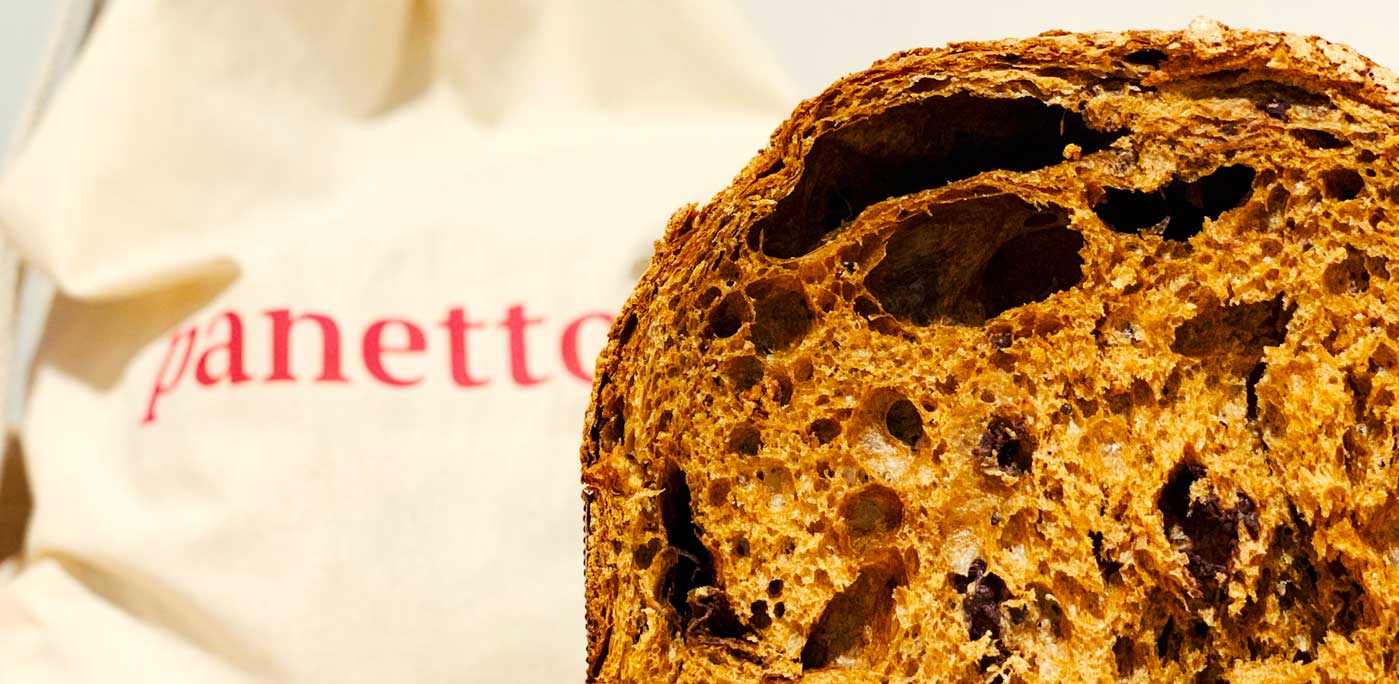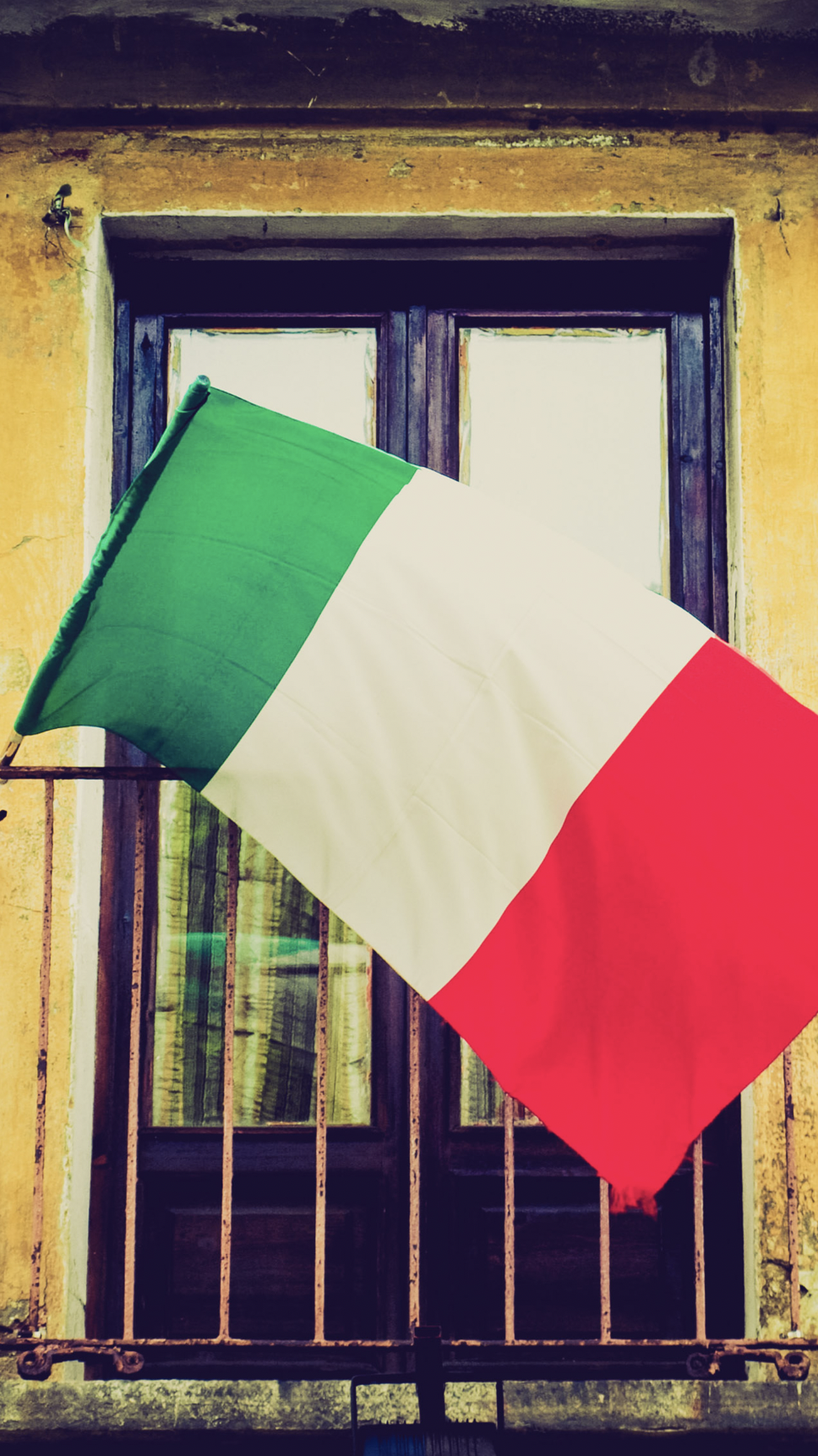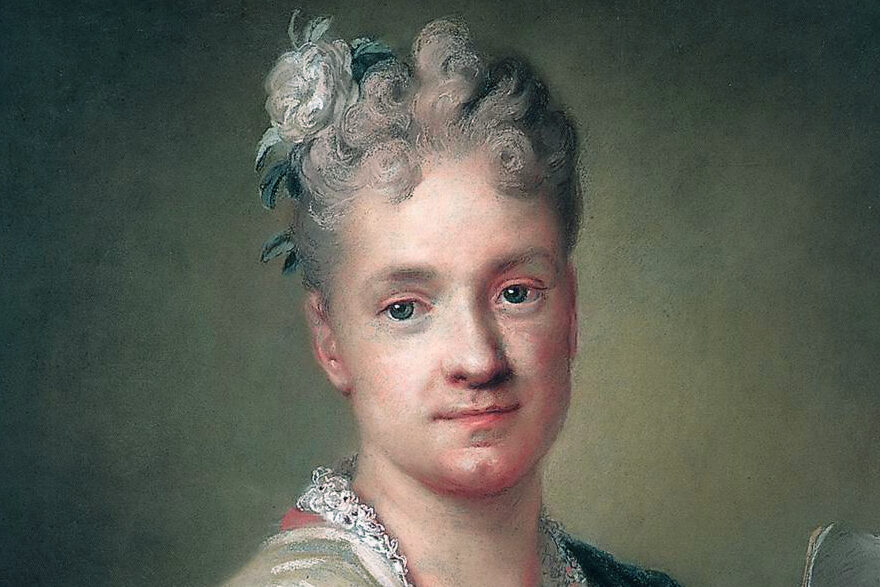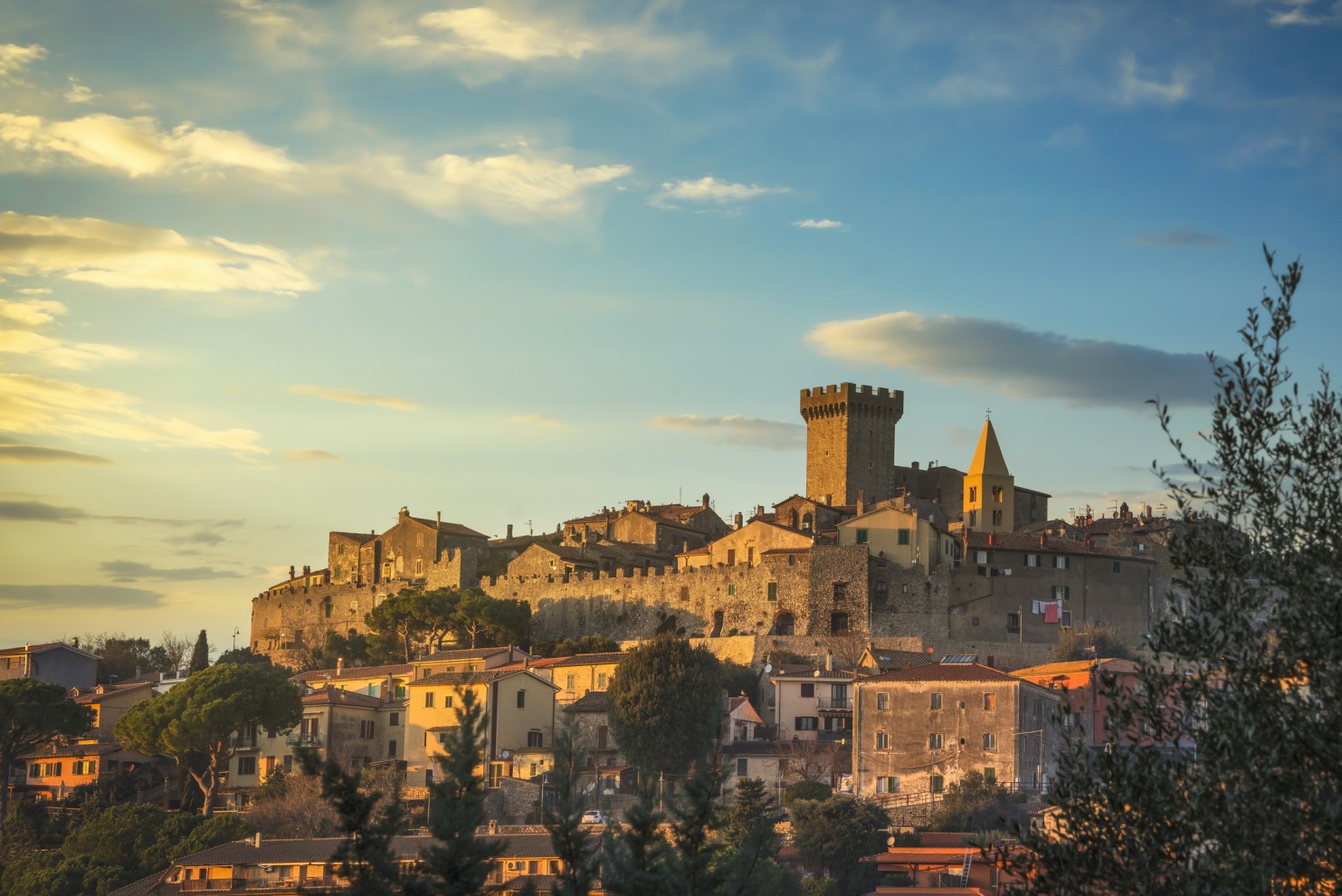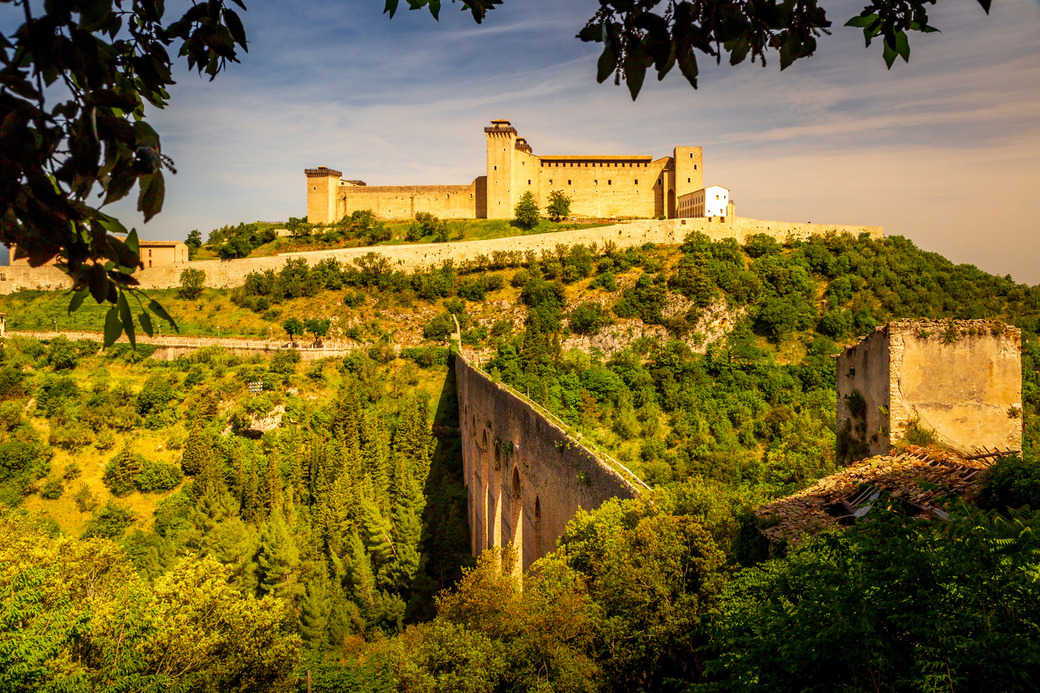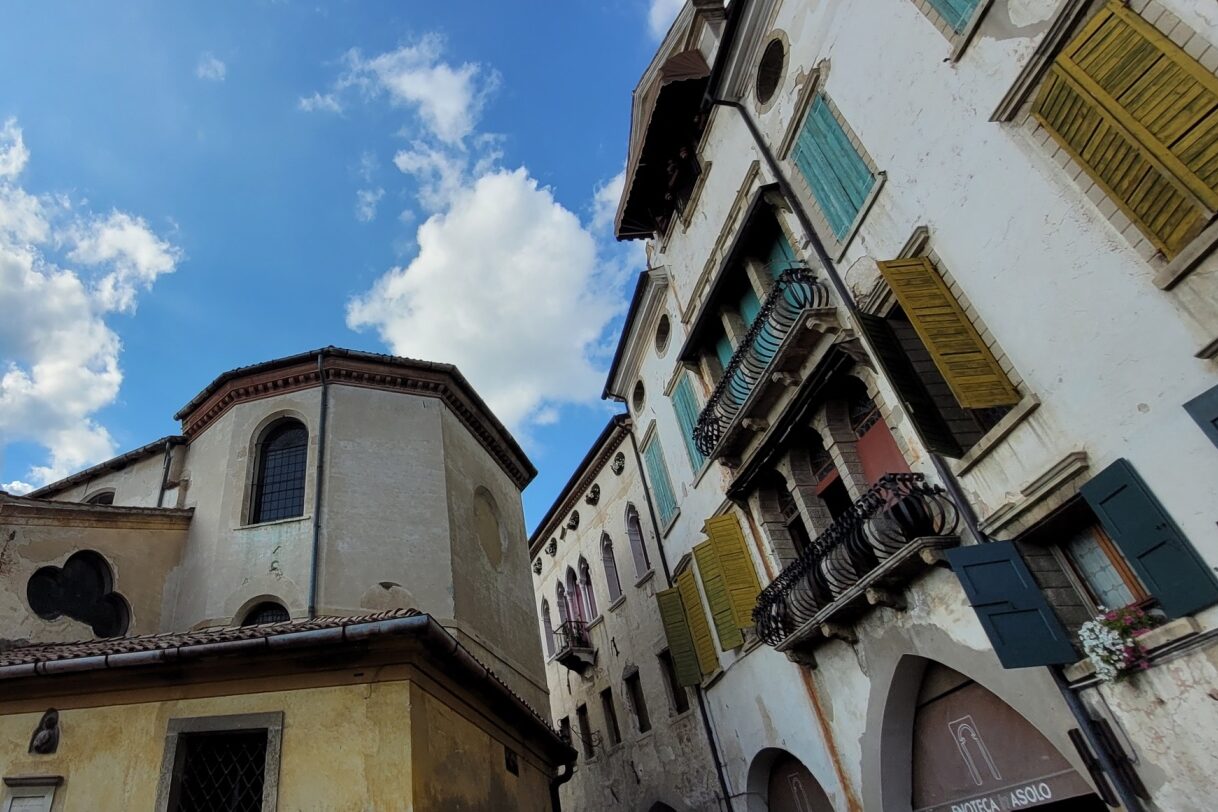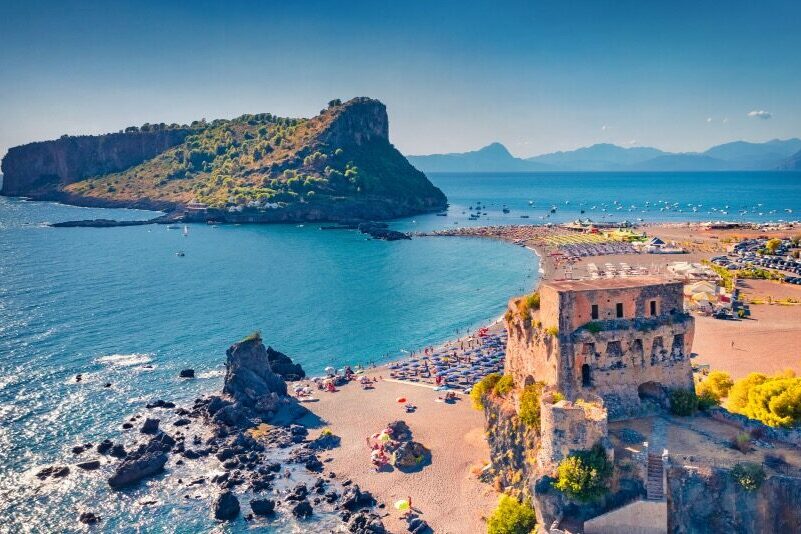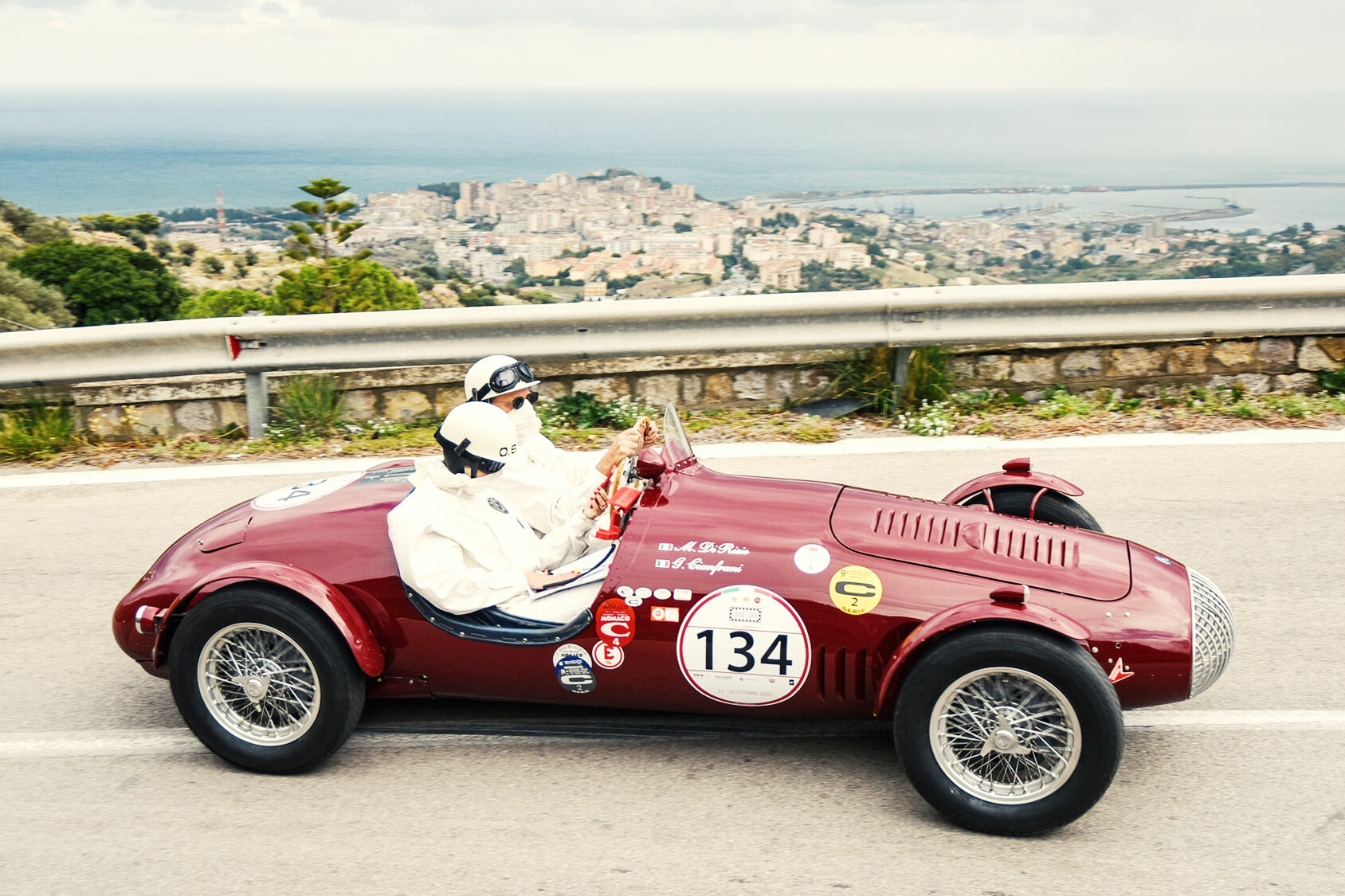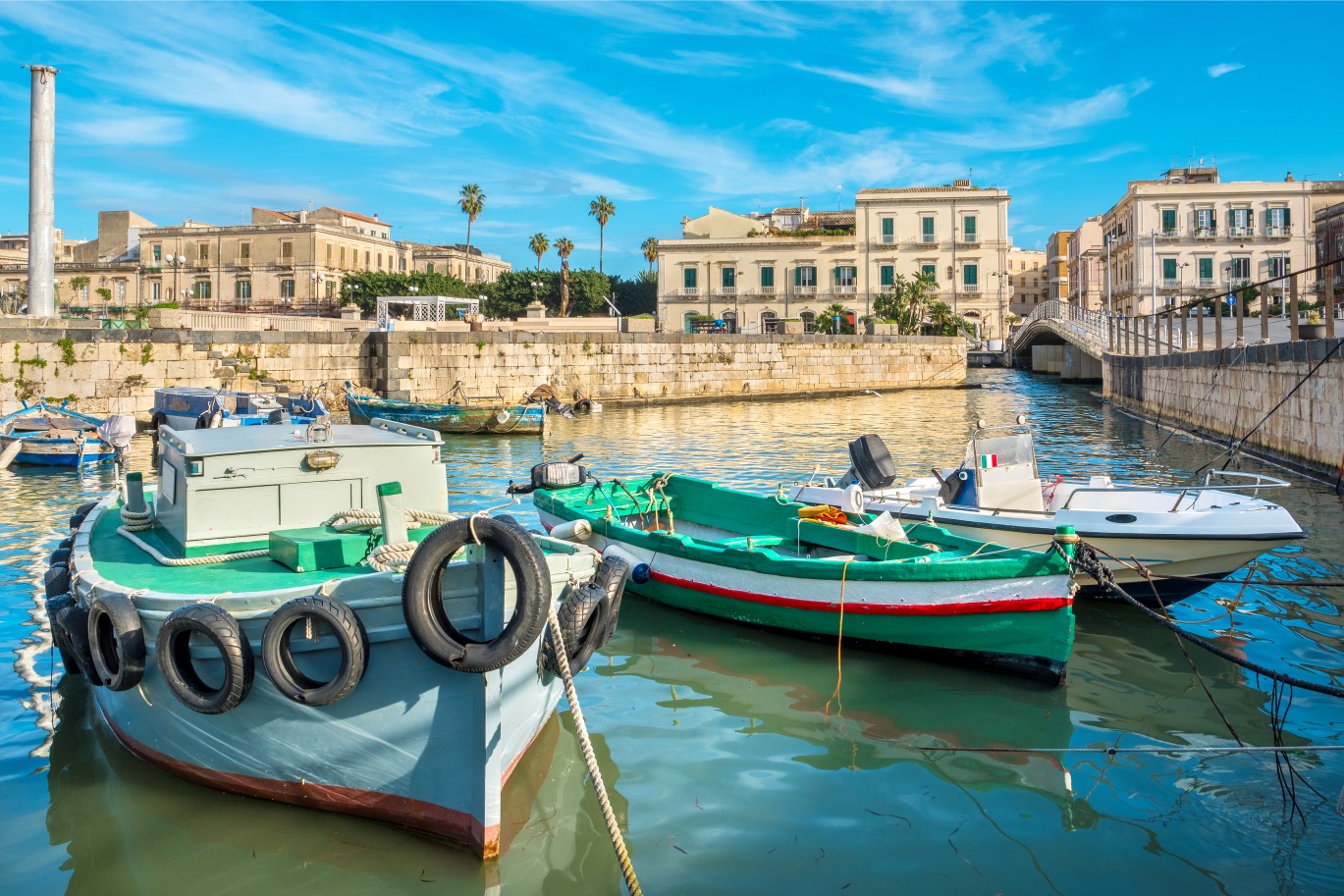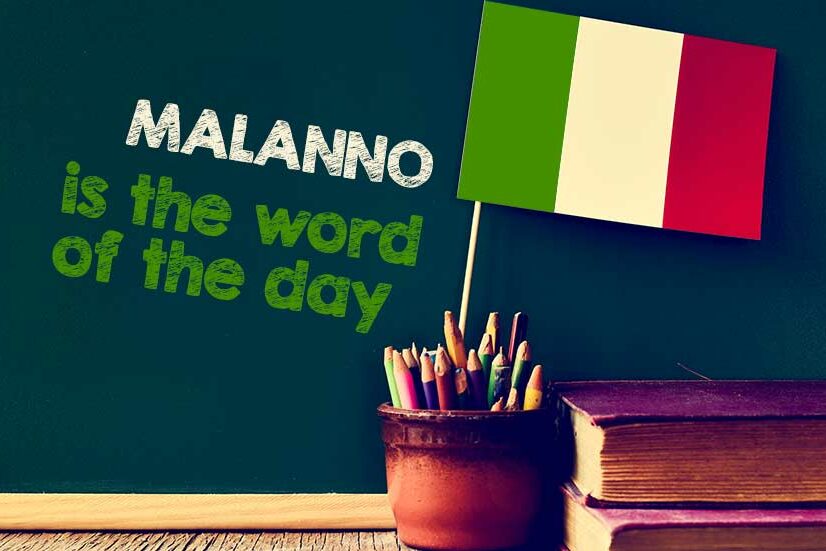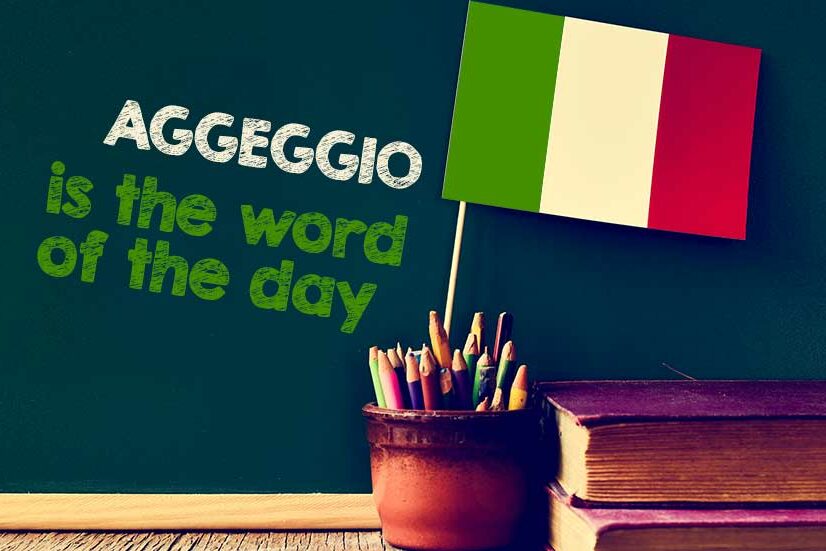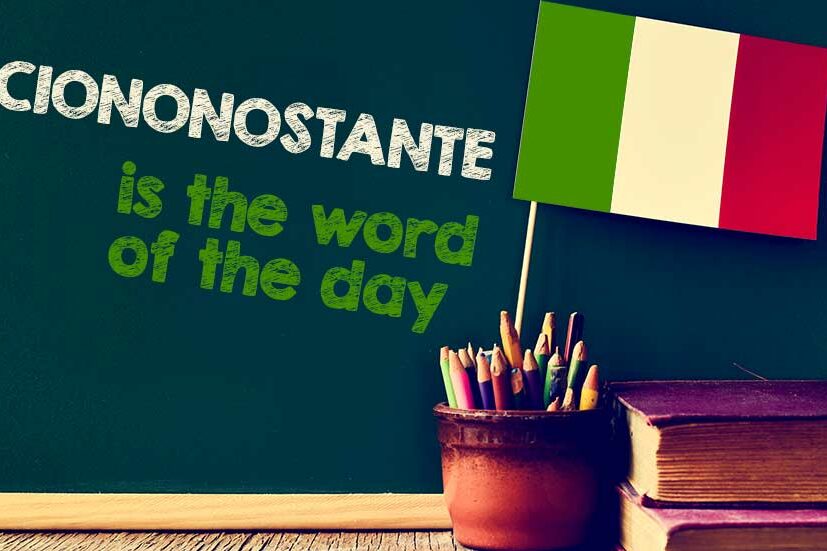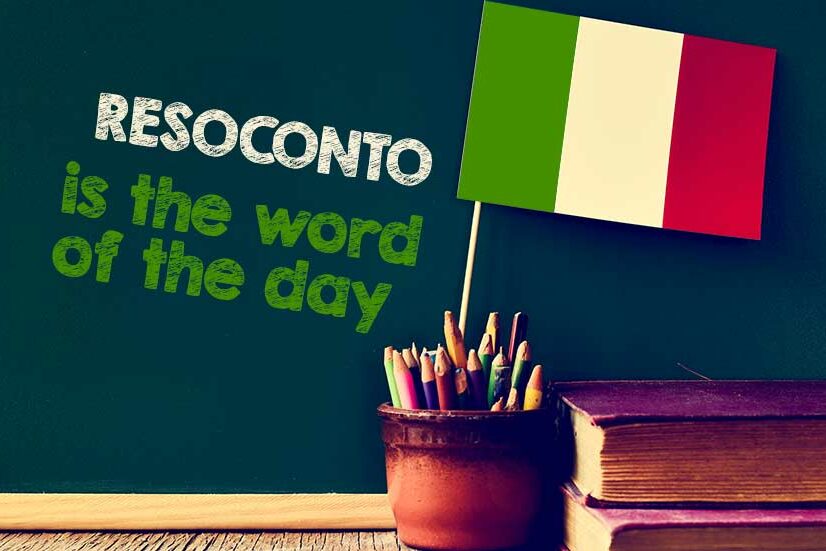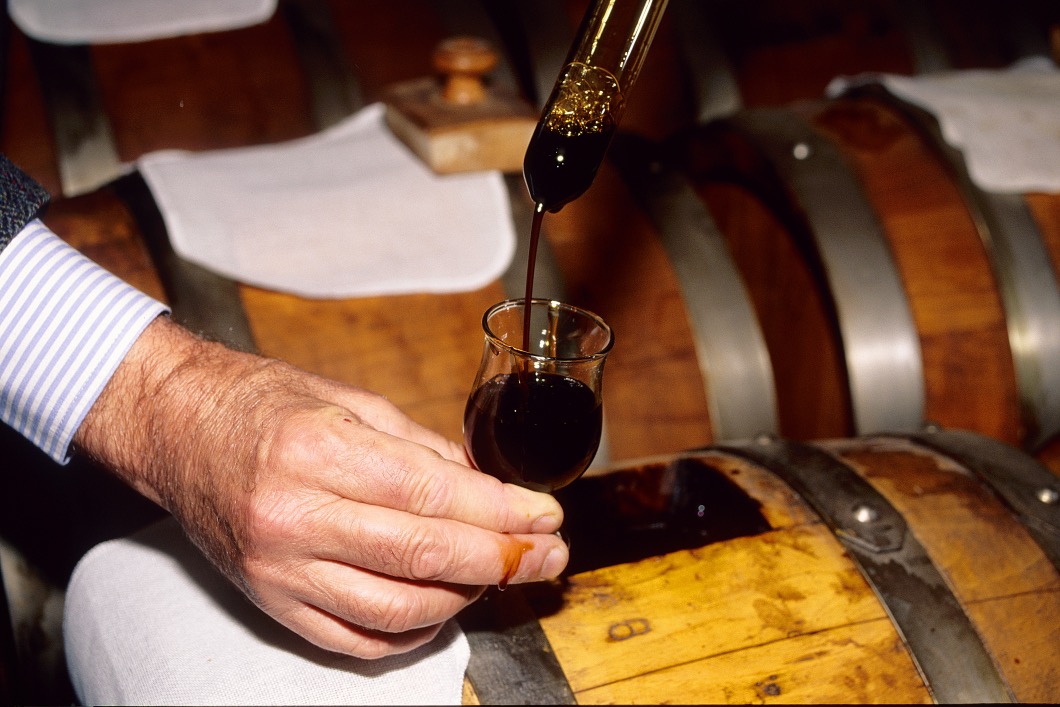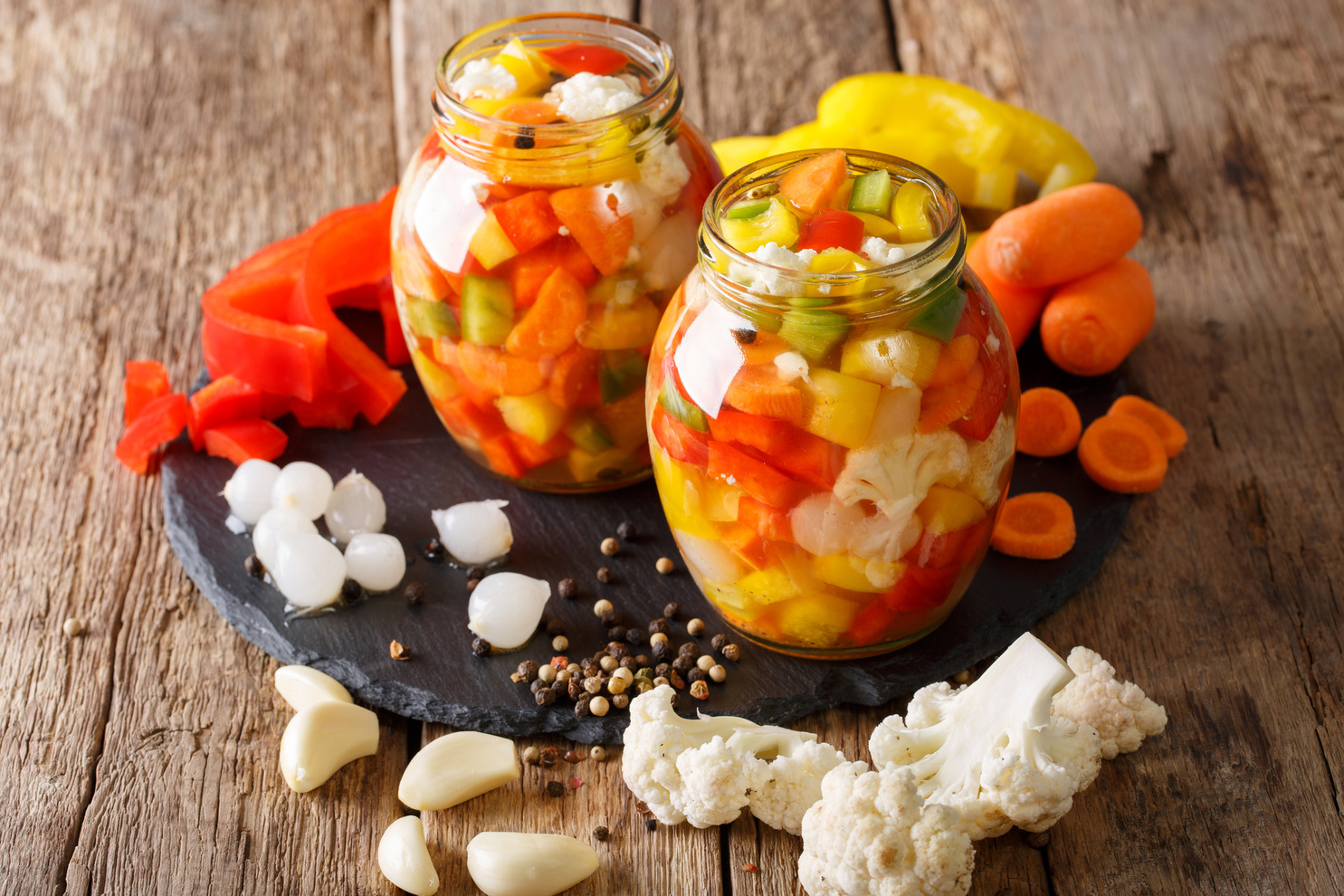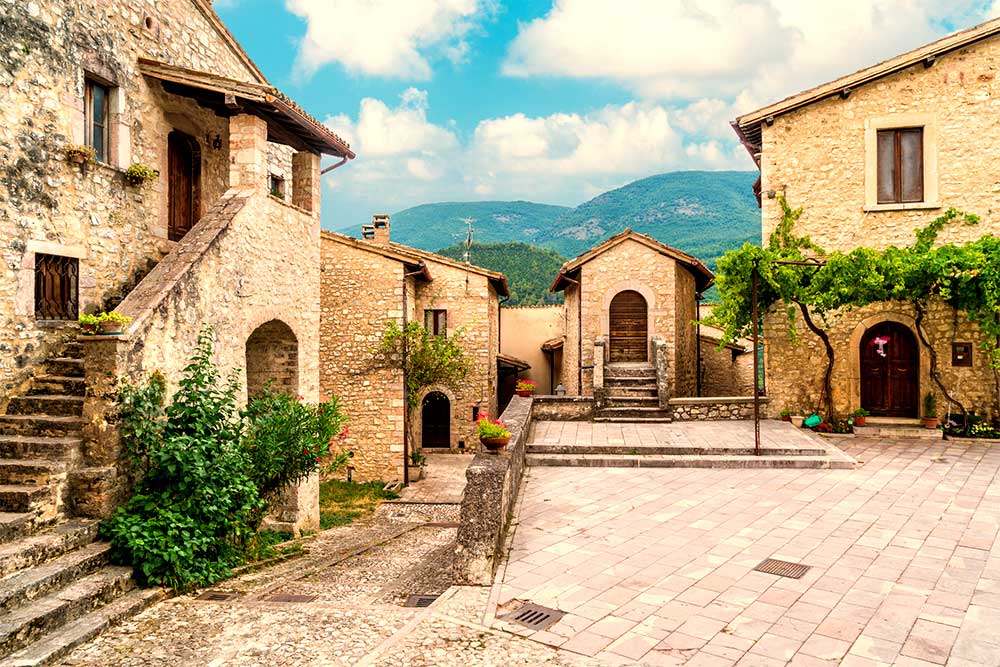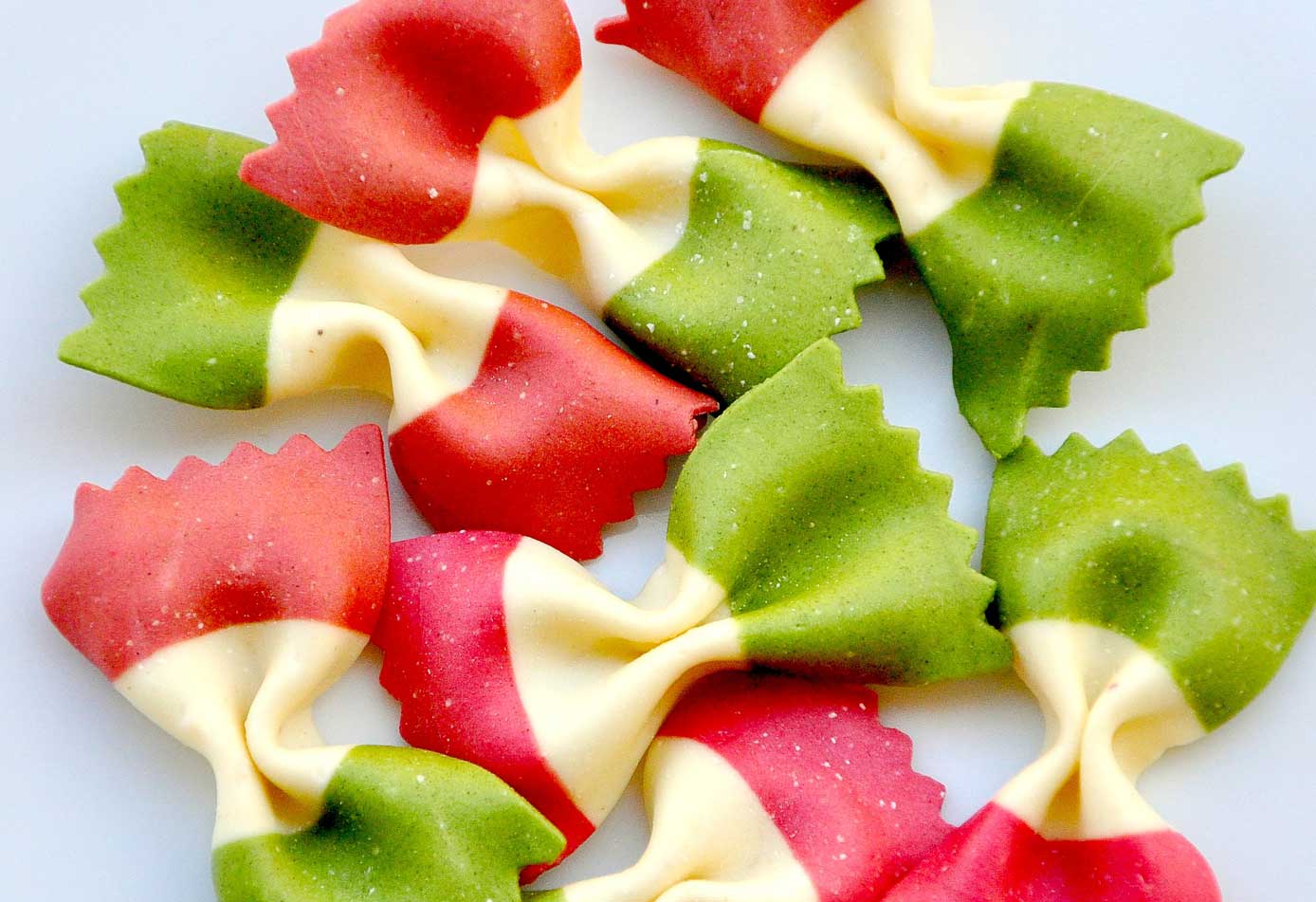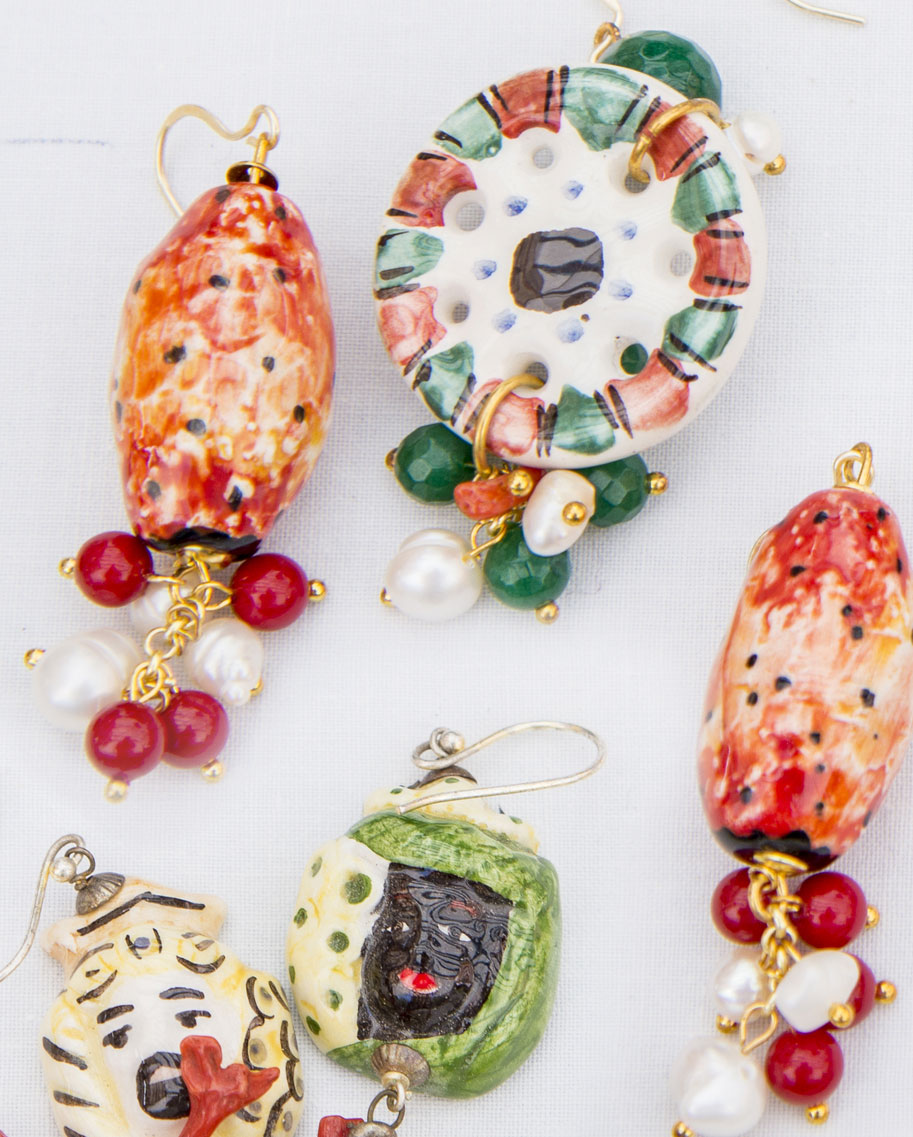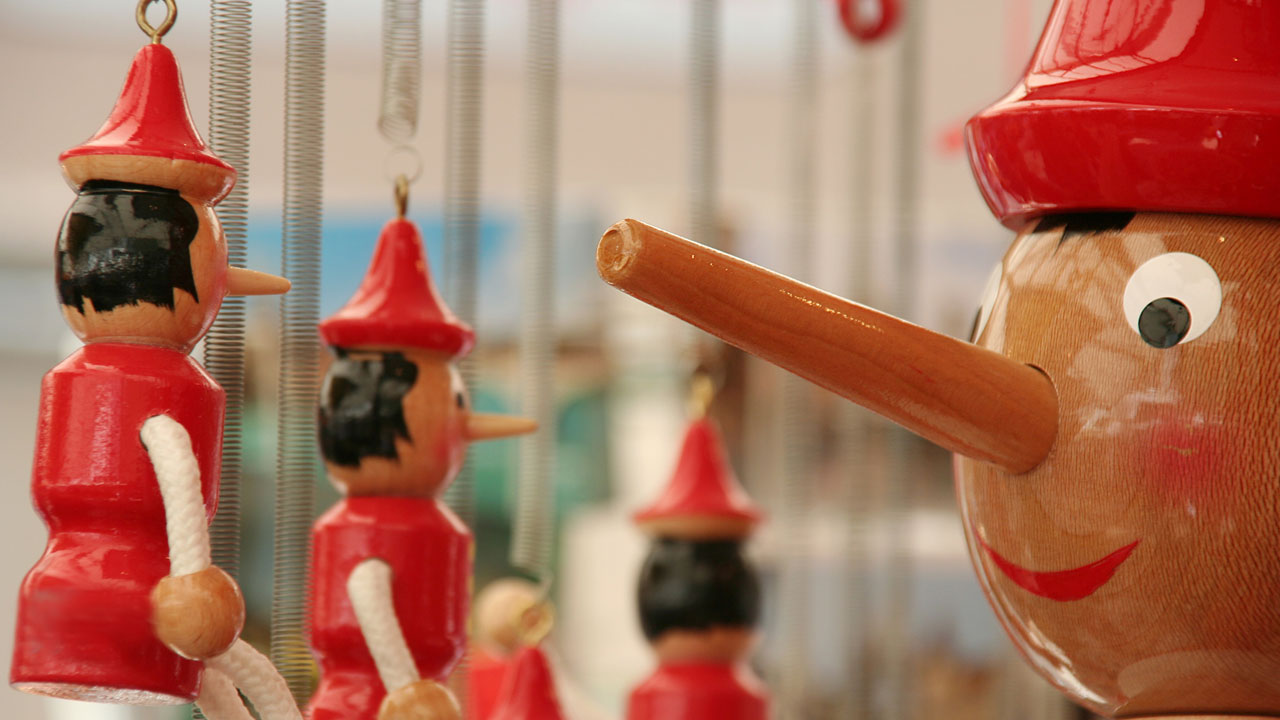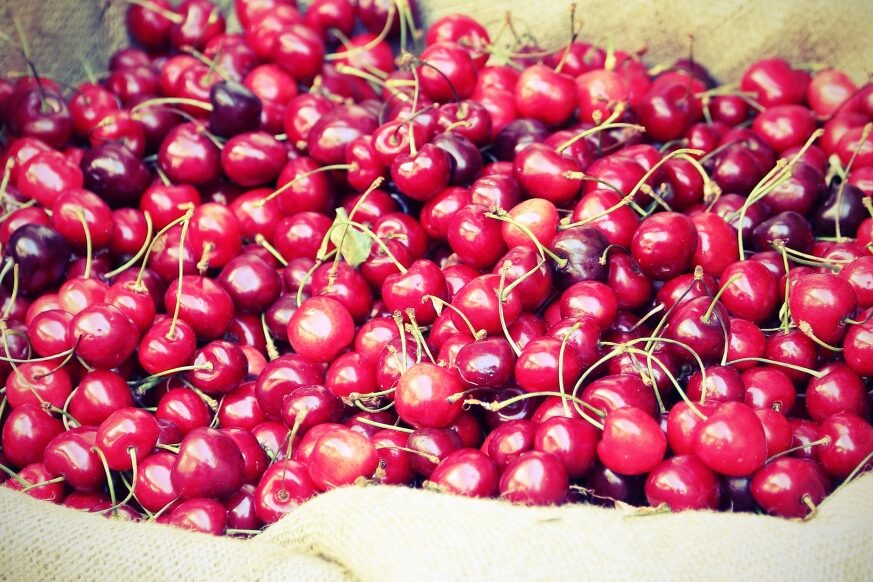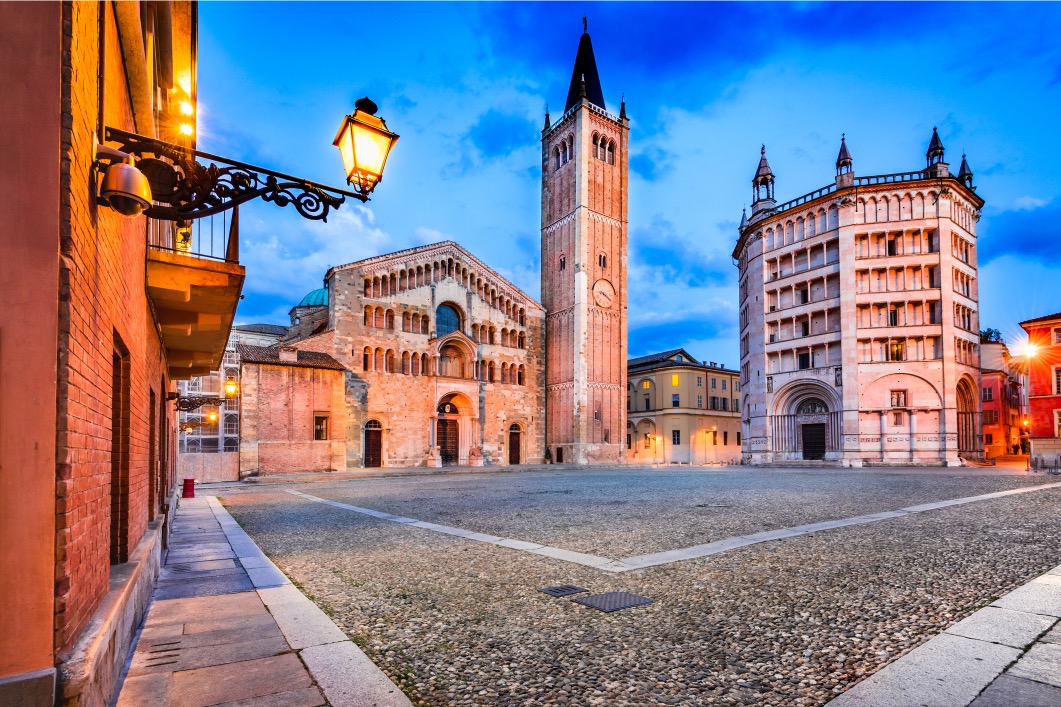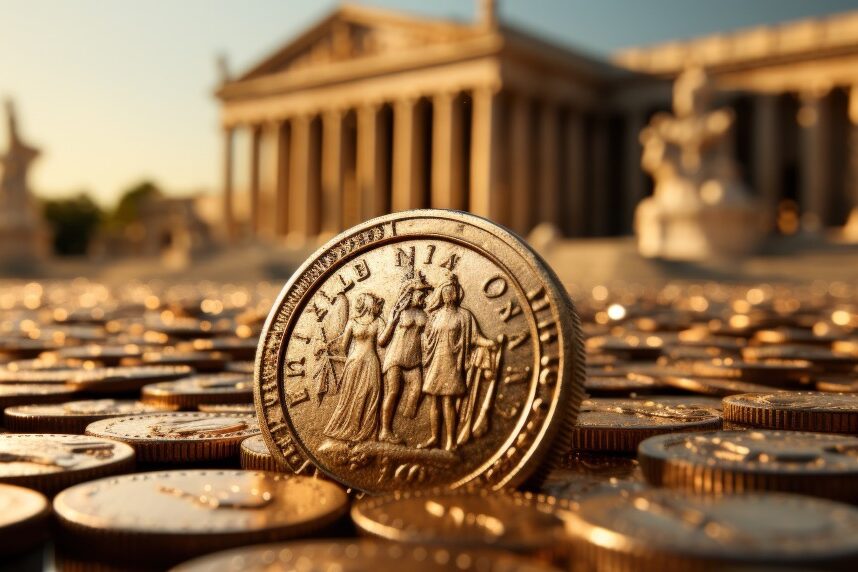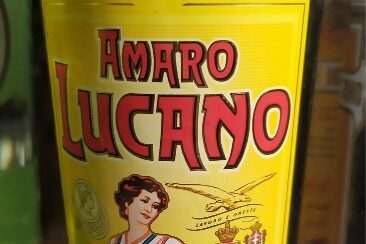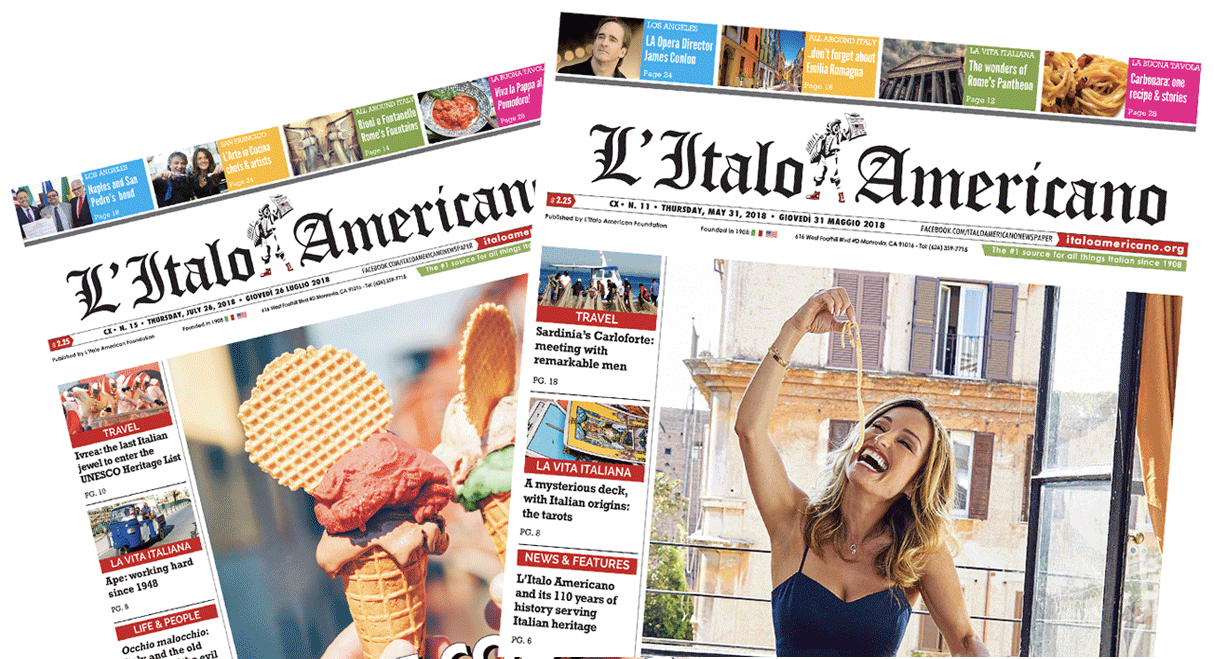The Italians enter the Christmas spirit with a fragrant, yeasty slice of panettone — Christmas isn’t Christmas without it on our festive tables. We can never get enough of it, especially for us who are Milanese. We have a near-cultish devotion to panettone when the Christmas season kicks in.
But how many Italians know that an increasing number of American people are also enjoying the pleasure of an indulgent panettone? And it’s not only those from the substantial Italian-American communities.
This new panettone culture has caught on in California and other parts of the US. In cities that boast the country’s best delis and some of the best bread such as NYC, San Francisco, Los Angeles and Seattle, the panettone has begun to measure up. Today tasting a slice of Italy’s fruity Christmas favorite in a pastry shop is becoming part of the American urban scene.
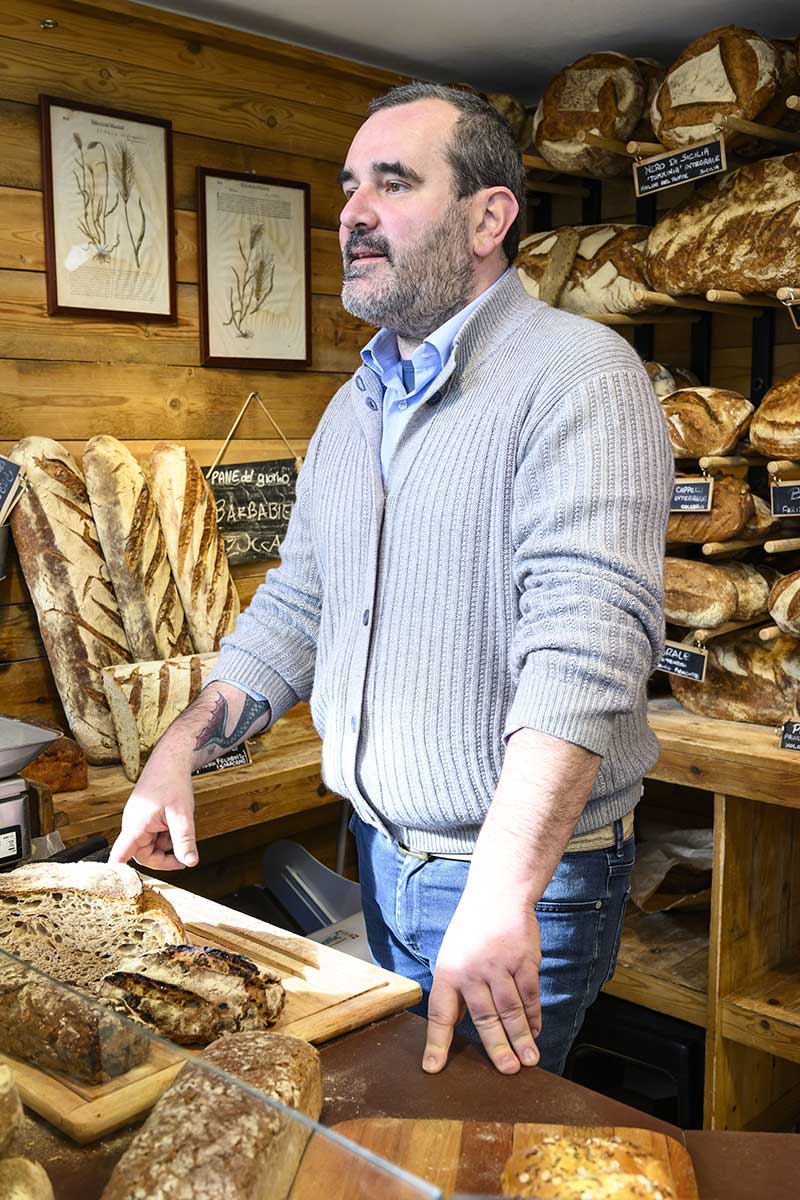
Davide Longoni came to California to produce panettone with local produce (Copyright: Brambilla Serrani)
In San Francisco, noted chef Roy Shvartzapel serves his own panettone at his restaurant FromRoy on 575 Mission Street. Californians also buy it through his virtual luxury bakery in Los Gatos.
Mentored by Iginio Massari, a great panettone master from Brescia, Roy has spent years obsessing and perfecting what he calls “the Mt. Everest of the baking world.” Roy is pursuing his ambitious dream to sell his panettone in Milan, where the iconic Christmas specialty originated several centuries ago.
Or what about the superlative panettone served at Emporio Rulli in historic downtown Larkspur in Marin County? Pastry chef Gary Rulli learned the art of panettone-making in Milan.
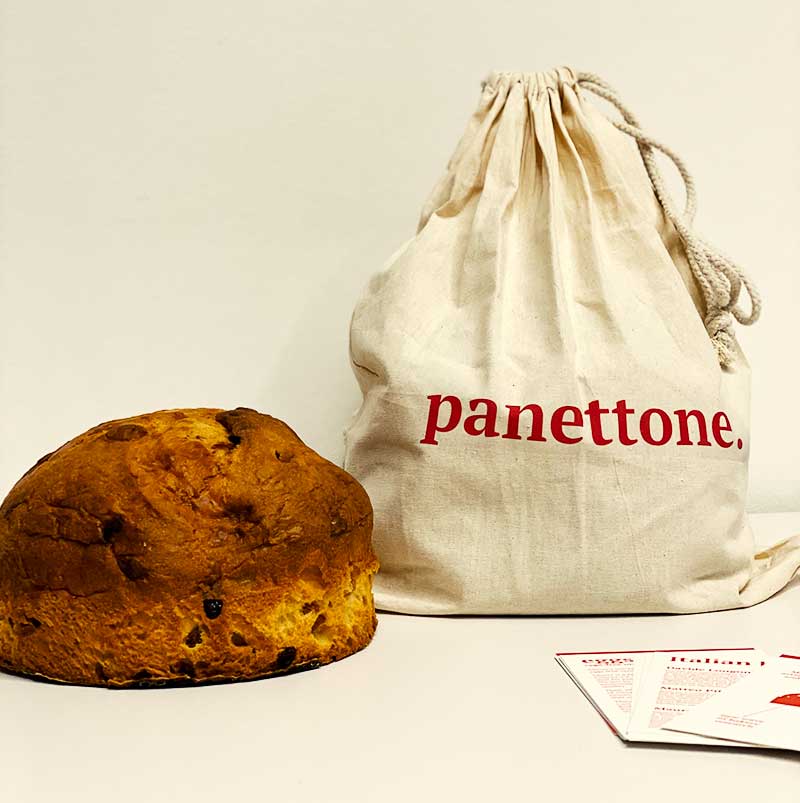
pasticIl panettone Milanese va in trasferta a Los Angeles (Copyright: Brambilla Serrani)
This year for the first time in the glorious history of panettone, a true baker from Milan, Davide Longoni, went to California to produce one entirely made in California. Longoni is a baking guru born in the Monza and Brianza province, who lives in Milan where he has three very well established bakeries (Panificio Davide Longoni) located in the Porta Romana area. Longoni is taking whole grains in new directions. He grows and harvests them in the proximity of the Chiaravalle Abbey outside Milan and in the Abruzzo region to obtain flours that connect to his bakery’s ethos: producing a healthier, better-tasting and more environmentally friendly bread.
“Bread is joy, art and revolution,” he says. His modern way of understanding bread as an agricultural product induced him to found PAU, an association of Panificatori Agricoli Urbani, or urban agricultural bakers.
Recently, in California Longoni led a small team of Italian bakers and pastry chefs to craft a panettone that represents a new wave in bakery research.
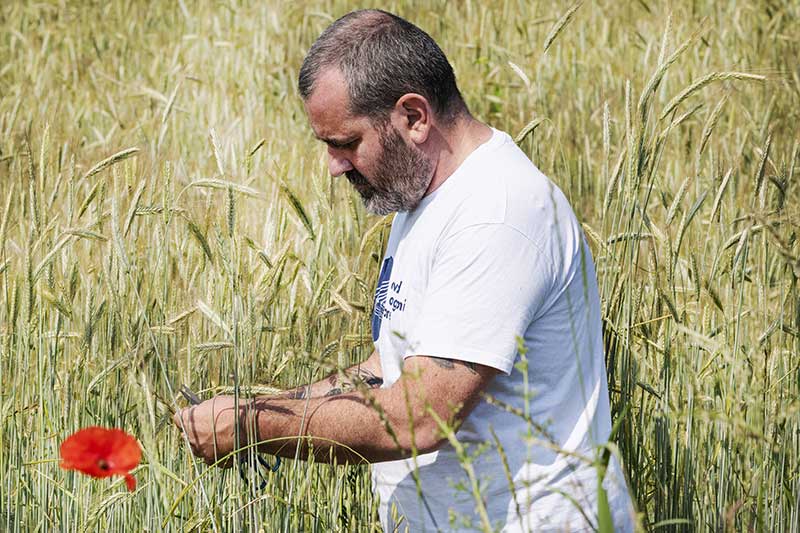
Davide Longoni, a true Milanese baker, is in Los Angeles to make Californian panettone (Copyright: Brambilla Serrani)
The project was conceived by Carlo Mari and Carlotta Borruto, cofounders at California Innovation, an organization located in San Francisco, and also cofounders at Italia Innovation based in Verona, Italy. The panettone was produced in San Mateo at Kitchentown, a startup incubator that helps develop, commercialize and launch impact-driven food products.
Two other experts involved in the project with Longoni are Matteo Piffer, a baker from Rovereto who is in charge of the business development at his family bakery Panificio Moderno, and Mauro Iannantuoni, head pastry chef at Ernst Knam in Milan. Iannantuoni opened his pastry shop in Brooklyn, NY and also worked at Armani Restaurant in Manhattan for a while before making his way back to his home country to continue pursuing his love for the products of his land.
“Together with Carlo and Carlotta, we selected the best Californian producers of raw ingredients to craft a panettone entirely made in California but prepared according to the Milanese artisanal pastry recipe and heritage,” says Longoni — or mother yeast, corn flour, eggs and butter, and contains only sultana raisins and candied orange, citron and lemon zest.
The three Italian bakers use stone-milled flour by Cainrnspring Mills, organic eggs from Clover, a co-op located in Sonoma County, and low-processed organic butter produced by Straus Family Creamery, a dairy located in Marin County.
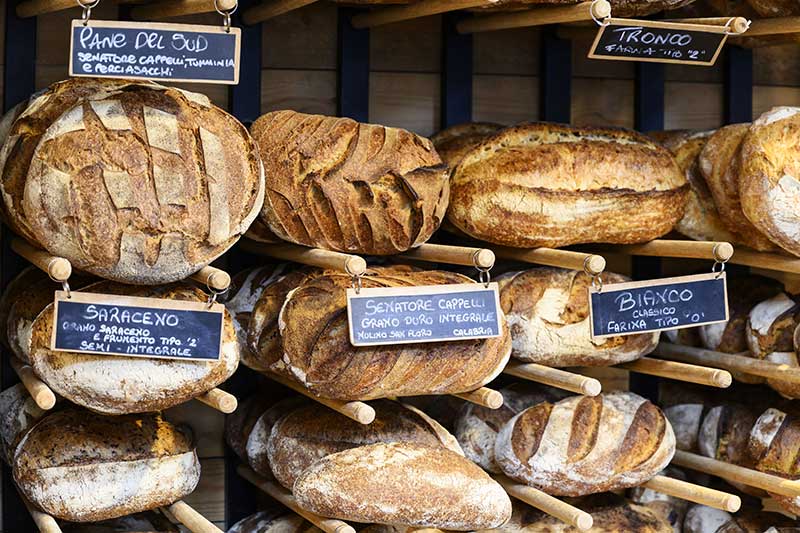
Pane fresco alla panetteria Longoni di Milano (Copyright: Brambilla Serrani)
Their panettone has been leavened using a natural yeast started in San Francisco with the Lactobacillus Sanfranciscensis, which gives sourdough bread its characteristic taste.
“The ‘canditi’ we used are fantastic,” remarks Longoni. “They are very aromatic, so Californian. Oranges and lemons were candied by Michael Recchiuti Confectionary.” Sultana raisins and sugar were carefully sourced by Bi-Rite markets, an institution in San Francisco.
Longoni and his team bake three variants of their panettone. Besides the classic traditional Milanese recipe, they also made a chocolate and lemon version, and a panettone al caffè, where coffee is contained in the dough.
They employ chocolate from Dandelion, a premium chocolate producer of San Francisco, and coffee from Verve Coffee Roasters, a coffee company from Santa Cruz.
“This year we produced a small quantity of our panettone that was available at Bi-Rite markets,” he says. “It was an experiment, a pilot project.” Next year, the quantity will increase to some 5,000 panettones that will give Californians a chance to get used to finer panettone made by authentic Italian masters.
“Americans are showing a real interest in Milanese panettone. They simply love it,” says Longoni. He adds that FromRoy was somehow “a good source of inspiration because he is an American pastry chef who really bakes a truly Italian-style panettone in California.”
Yet, the iconic panettone remains an emblem of the Milanese patisserie.
“Panettone consumption was at first recorded in a manuscript written by a humanist, Giorgio Valagussa, in the late 1400s that is today preserved at the Ambrosian Library in Milan,” explains Stanislao Porzio, a panettone connoisseur who is the founder, organizer, and promoter of Re Panettone, a competition that since 2008 has been gathering the top pastry chefs in the panettone category from across Italy. The event, held every November in Milan, crowns the “King Panettone.”
Valagussa worked at the Sforza Castle as a tutor of Ludovico Maria Sforza, the duke of Milan, also known as Ludovico Il Moro. “Valagussa described the Milanese tradition of serving this enriched bread on December 24 along with three other large special loaves used only once a year,” explains Porzio, who is also the author of the book Il Panettone. Storia, Leggende e Segreti di un Protagonista del Natale.
“At that time, panettone was not sweetened,” he says.
There are at least three other legends about its invention. The most famous has it that one cold Christmas Eve back in the 1400s, a young cook at the Sforza court named Toni was preparing bread for the great Christmas banquet held by the Duke of Milan. But despite the joyous celebrations, Toni was melancholic and a bit scattered. In an involuntary gesture, he dropped eggs, sugar raisins and candied fruit into the dough. That sweet rich bread was served to the guests anyway and they really loved it: that’s how Toni’s bread – il pan de Toni in Italian – got started.
“The second legend states that an aristocrat named Ughetto degli Atellani fell so madly in love with a baker’s daughter that decided to abandon his status and work at his father-in-law’s store located on Corso Magenta, where he created the recipe soon to become a local success,” says Porzio.
According to the third legend, panettone got its start by a nun named Ughetta in her monastery. Sister Ughetta made her sisters very happy and turned herself into a sort of businesswoman. The Milanese word “Ughet” translates as sultana raisins, which are one of the main ingredients of panettone together the colorful candied fruit. What is the symbolism behind those ingredients? We will never know exactly.
“Panettone is the symbol of Milanese cultural identity, yet it is by its nature the antithesis of a zero-km food if we look at its ingredients,” Porzio admits.
“Candied fruit is a typical product of southern Italy, the sultana raisins were a gift from Constantinople, cornflour originated in the Americas and vanilla comes from Madagascar,” remarks Porzio.
We only know that Milanese bakers and confectioners have always made panettone for the tables of Lombards at Christmas. “In the early ’20s, Motta and Alemagna were the very first two panettone industrialists to spread the custom of eating the fruity Christmas cake throughout Italy,” explains Porzio. “Later in the ‘80s, the roles of artisan pastry chef Achille Zoia from Cologno Monzese and Rolando Morondin were also important, teaching today’s pastry chefs the art of the panettone through training courses across the country.”
Porzio is campaigning to add panettone to the UNESCO’s list of Intangible Heritage, exactly like pizza.
Readers are welcome to sign a petition via his website www.repanettone.it
“We want to protect the know-how, the correct art of panettone-making, which is a central element of Milanese and Italian identity,” he says. Porzio also hopes that it will be recognized by the EU as a TSG (Traditional Speciality Guaranteed) product whose authenticity depends on the traditional recipe and production method.
“But I also believe that the panettone produced in Italy has something extra,” remarks Porzio.
The very Milanese baker Longoni believes in the free circulation of ideas and knowledge instead: the so-called “Made in Italy” is important but its definition is quite complex. “I only know that everybody is pursuing a protectionist discourse towards products, but what about if we begin to protect the know-how instead?” asks Longoni.
He and his team have found a way to share knowledge. “We protect knowledge and promote the exchange of know-how, setting in motion a virtuous circle: we give and naturally we receive. Instead of spending energy to protect and limit, let us spend it to guarantee transparency.”
Mauro Iannantuoni defines Longoni as “a great professional.” Iannantuoni and Longoni began experimenting on their first panettone together in 2008. “I look forward to starting a new job in his workshop next year. I am excited about it,” says Iannantuoni, who is very happy about the result. “Our artisanal panettone produced in California is excellent. But it certainly expresses a new concept. I only hope that it does not attract criticism from purists,” he says.
“Anyway, the candidacy of the art of panettone-making on the UNESCO’s list is most welcome.”
Gli italiani entrano nello spirito natalizio con una fetta di panettone profumata e lievitata – il Natale non è Natale senza un panettone sulle nostre tavole delle feste. Non ne abbiamo mai abbastanza, soprattutto noi milanesi. Abbiamo una venerazione per il panettone quando arriva il periodo natalizio.
Ma quanti italiani sanno che anche un numero crescente di americani si gode il piacere di un panettone? E non si tratta solo di chi appartiene alle consistenti comunità italo-americane.
Questa nuova cultura del panettone ha preso piede in California e in altre parti degli Stati Uniti. Nelle città che vantano le migliori gastronomie del paese e alcune delle migliori panetterie come New York, San Francisco, Los Angeles e Seattle, il panettone ha iniziato a diffondersi. Oggi degustare in una pasticceria una fetta del fruttato piatto natalizio italiano sta entrando a far parte della scena urbana americana.
A San Francisco, il noto chef Roy Shvartzapel serve il suo panettone nel suo ristorante FromRoy sulla 575 di Mission Street. I californiani lo comprano anche attraverso la sua panetteria di lusso virtuale a Los Gatos.
Supervisionato da Iginio Massari, grande maestro bresciano del panettone, Roy ha passato anni a perfezionare quello che lui chiama “l’Everest del mondo della panetteria”. Roy sta perseguendo il suo ambizioso sogno di vendere il suo panettone a Milano, dove l’iconica specialità natalizia è nata diversi secoli fa.
E che dire del superlativo panettone servito all’Emporio Rulli, nel centro storico di Larkspur, nella contea di Marin County? Il pasticcere Gary Rulli ha imparato l’arte del panettone a Milano.
Quest’anno, per la prima volta nella gloriosa storia del panettone, un vero panettiere milanese, Davide Longoni, è andato in California per produrne uno interamente realizzato in California. Longoni è un guru della panificazione nato in provincia di Monza e Brianza, che vive a Milano, dove ha tre panifici molto affermati (Panificio Davide Longoni) situati nella zona di Porta Romana. Longoni sta portando i cereali integrali verso nuove vette. Li coltiva e li raccoglie nelle vicinanze dell’Abbazia di Chiaravalle, alle porte di Milano, e in Abruzzo per ottenere farine che si legano alla filosofia del suo panificio: produrre un pane più sano, più gustoso e più rispettoso dell’ambiente.
“Il pane è gioia, arte e rivoluzione”, dice. Il suo modo moderno di intendere il pane come prodotto agricolo lo ha portato a fondare la PAU, un’associazione di Panificatori Agricoli Urbani.
Recentemente, Longoni ha guidato in California un piccolo team di panificatori e pasticceri italiani per creare un panettone che rappresenta una nuova tendenza nella ricerca della panificazione.
Il progetto è stato ideato da Carlo Mari e Carlotta Borruto, co-fondatori di California Innovation, organizzazione con sede a San Francisco, e co-fondatori di Italia Innovation con sede a Verona. Il panettone è stato prodotto a San Mateo a Kitchentown, un incubatore di start-up che aiuta a sviluppare, commercializzare e lanciare prodotti alimentari ad alto impatto.
Altri due esperti coinvolti nel progetto con Longoni sono Matteo Piffer, panettiere di Rovereto che si occupa dello sviluppo aziendale del Panificio Moderno di famiglia, e Mauro Iannantuoni, capo pasticcere di Ernst Knam a Milano. Iannantuoni ha aperto la sua pasticceria a Brooklyn, NY e ha lavorato anche all’Armani Restaurant di Manhattan per un po’ prima di tornare in patria per continuare a coltivare il suo amore per i prodotti della sua terra.
“Insieme a Carlo e Carlotta, abbiamo selezionato i migliori produttori californiani di materie prime per realizzare un panettone fatto interamente in California ma preparato secondo la ricetta e l’eredità della pasticceria artigianale milanese”, dice Longoni: lievito madre, farina di mais, uova e burro, contiene solo uva sultanina e scorza di arancia, cedro e limone candito.
I tre panettieri italiani utilizzano farina macinata a pietra di Cainrnspring Mills, uova biologiche di Clover, una cooperativa situata nella contea di Sonoma, e burro biologico a basso contenuto di lavorazione prodotto da Straus Family Creamery, caseificio situato nella contea di Marin County.
Il loro panettone viene fatto lievitato con un lievito naturale avviato a San Francisco con il Lactobacillus Sanfranciscensis, che conferisce al pane a lievitazione naturale il suo caratteristico sapore.
“I canditi che abbiamo usato sono fantastici”, osserva Longoni. “Sono molto aromatici, così californiani. Arance e limoni sono stati canditi dalla pasticceria Michael Recchiuti”. L’uvetta sultanina e lo zucchero sono stati attentamente selezionati dai mercati Bi-Rite, un’istituzione di San Francisco.
Longoni e la sua squadra cucinano tre varianti del loro panettone. Oltre alla classica ricetta tradizionale milanese, hanno realizzato anche una versione al cioccolato e limone, e un panettone al caffè, dove l’impasto contiene il caffè.
Impiegano il cioccolato di Dandelion, produttore premium di cioccolato di San Francisco, e il caffè di Verve Coffee Roasters, azienda di caffè di Santa Cruz.
“Quest’anno abbiamo prodotto una ridotta quantità di panettoni, che era disponibile nei mercati Bi-Rite”, dice. “Era un esperimento, un progetto pilota”. L’anno prossimo, la quantità salirà a circa 5.000 panettoni, cosa che darà ai californiani la possibilità di abituarsi al panettone di alta qualità prodotto da autentici maestri italiani”.
“Gli americani stanno dimostrando un reale interesse per il panettone milanese. Semplicemente lo amano”, dice Longoni. Aggiunge che FromRoy è stato in qualche modo “una buona fonte di ispirazione perché è un pasticcere americano che in California prepara davvero un panettone all’italiana”.
Eppure, l’iconico panettone rimane un emblema della pasticceria milanese.
“Il consumo di panettone è stato inizialmente registrato in un manoscritto scritto da un umanista, Giorgio Valagussa, alla fine del 1400, oggi conservato presso la Biblioteca Ambrosiana di Milano”, spiega Stanislao Porzio, intenditore di panettoni, fondatore, organizzatore e promotore di Re Panettone, un concorso che dal 2008 riunisce i migliori pasticceri della categoria panettoni di tutta Italia. L’evento, che si tiene ogni novembre a Milano, incorona il “Re Panettone”.
Valagussa ha lavorato al Castello Sforzesco come tutor di Ludovico Maria Sforza, il duca di Milano, noto anche come Ludovico Il Moro. “Valagussa ha descritto la tradizione milanese di servire questo pane arricchito il 24 dicembre insieme ad altri tre grandi pani speciali utilizzati solo una volta all’anno”, spiega Porzio, autore anche del libro Il Panettone. Storia, Leggende e Segreti di un Protagonista del Natale.
“A quel tempo, il panettone non era addolcito”, dice.
Ci sono almeno altre tre leggende sulla sua invenzione. La più famosa è che una fredda vigilia di Natale del 1400, un giovane cuoco della corte sforzesca di nome Toni stava preparando il pane per il grande banchetto di Natale tenuto dal Duca di Milano. Nonostante i festeggiamenti gioiosi, Toni era malinconico e un po’ distratto. Con un gesto involontario, buttò nell’impasto uova, uvetta, zucchero e frutta candita. Quel dolce e ricco pane venne comunque servito agli ospiti che lo amarono molto: così è nato il pane di Toni – il pan de Toni”.
“La seconda leggenda narra che un aristocratico di nome Ughetto degli Atellani si innamorò così follemente della figlia di un fornaio che decise di abbandonare il suo status e di lavorare nel negozio del suocero in Corso Magenta, dove creò la ricetta che presto divenne un successo locale”, dice Porzio.
Secondo la terza leggenda, il panettone ha avuto inizio con una suora di nome Ughetta nel suo monastero. Suor Ughetta rese felici le sorelle e si trasformò in una sorta di donna d’affari. La parola milanese “Ughet” si traduce in uvetta sultanina, che è uno degli ingredienti principali del panettone insieme ai coloratissimi canditi. Qual è il simbolismo dietro questi ingredienti? Non lo sapremo mai esattamente.
“Il panettone è il simbolo dell’identità culturale milanese, ma è per sua natura l’antitesi di un cibo a km zero se ne guardiamo gli ingredienti”, ammette Porzio.
“La frutta candita è un prodotto tipico del sud Italia, l’uva sultanina era un dono di Costantinopoli, la farina di mais originaria delle Americhe e la vaniglia viene dal Madagascar”, osserva Porzio.
Sappiamo solo che i panettieri e i pasticceri milanesi hanno sempre fatto il panettone per le tavole dei Lombardi a Natale. “All’inizio degli anni ’20, Motta e Alemagna sono stati i primi due industriali del panettone a diffondere in tutta Italia l’usanza di mangiare il dolce natalizio fruttato”, spiega Porzio. “Alla fine degli anni ’80 divennero importanti anche i ruoli del pasticcere artigianale Achille Zoia di Cologno Monzese e Rolando Morondin, che oggi insegnano ai pasticceri l’arte del panettone attraverso corsi di formazione su tutto il territorio nazionale”.
Porzio si batte per aggiungere il panettone alla lista del Patrimonio Immateriale dell’UNESCO, proprio come la pizza.
I lettori sono invitati a firmare una petizione sul suo sito web www.repanettone.it
“Vogliamo proteggere il know-how, la corretta arte del panettone, che è un elemento centrale dell’identità milanese e italiana”, dice. Porzio spera inoltre che venga riconosciuto dall’UE come prodotto STG (Specialità Tradizionale Garantita) la cui autenticità dipende dalla ricetta tradizionale e dal metodo di produzione.
“Ma credo anche che il panettone prodotto in Italia abbia qualcosa in più”, osserva Porzio.
Lo stesso panettiere milanese Longoni crede invece nella libera circolazione di idee e conoscenze: il cosiddetto “Made in Italy” è importante ma la sua definizione è piuttosto complessa. “So solo che tutti inseguono un discorso protezionistico verso i prodotti, invece dovremmo proteggere il know-how”, sostiene Longoni.
Lui e il suo team hanno trovato un modo per condividere la conoscenza. “Proteggiamo la conoscenza e promuoviamo lo scambio di know-how, innescando un circolo virtuoso: diamo e naturalmente riceviamo. Invece di spendere energia per proteggere e limitare, spendiamola per garantire la trasparenza”.
Mauro Iannantuoni definisce Longoni “un grande professionista”. Iannantuoni e Longoni hanno iniziato a sperimentare insieme il loro primo panettone nel 2008. “Non vedo l’ora di cominciare a lavorare nel suo laboratorio il prossimo anno. Ne sono entusiasta”, dice Iannantuoni, che è molto contento del risultato. “Il nostro panettone artigianale prodotto in California è eccellente. Ma certamente esprime un nuovo concetto. Spero solo che non attiri critiche da parte dei puristi”, dice.
“In ogni caso, la candidatura dell’arte del panettone nella lista dell’UNESCO è cosa molto gradita”.




